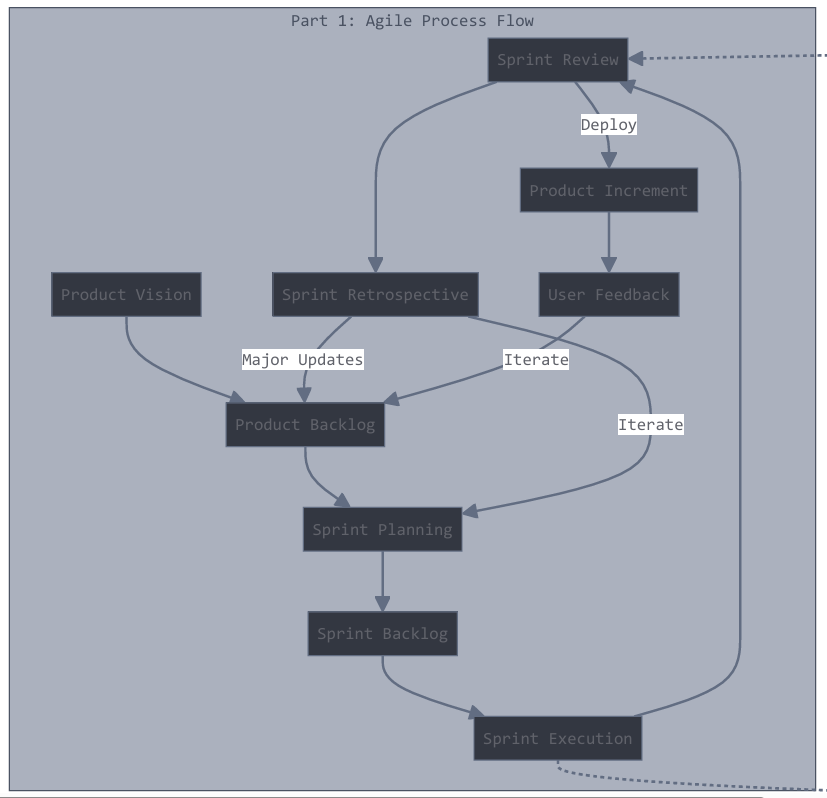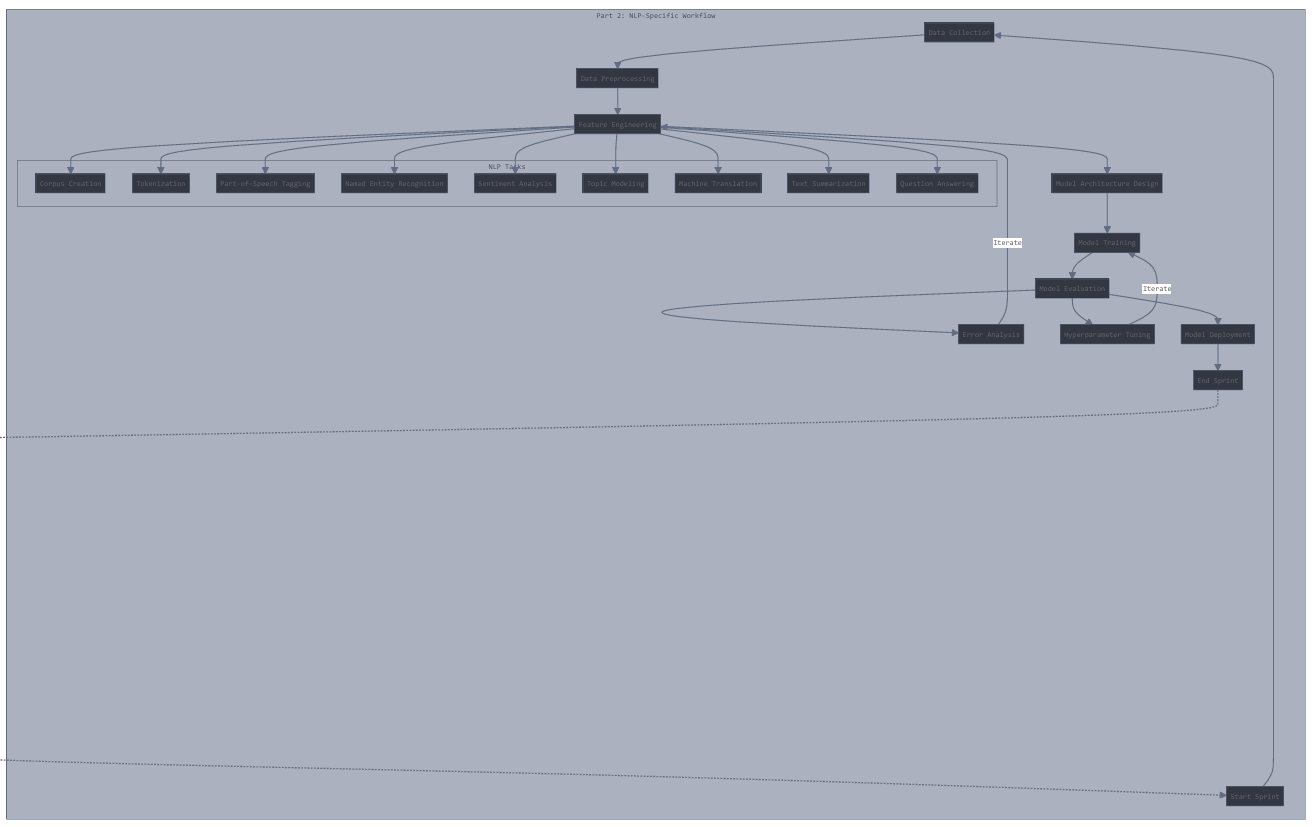and the distribution of digital products.
Revolutionizing Product Management: The Confluence of AI, NLP and Agile Methodologies
\ The convergence of Artificial Intelligence (AI) and Natural Language Processing (NLP) is fundamentally reshaping the landscape of product management within the technology sector. This discourse delves into the intricate ways these innovations, when harmonized with Agile methodologies, are redefining the paradigms of product development, market strategy formulation, and optimization processes. By integrating advanced AI and NLP capabilities, product management is poised for a profound transformation that emphasizes data-driven decision-making and heightened responsiveness to market dynamics.
AI and NLP: Catalysts for Transforming Product Management\ 2.1 Augmented Data Analysis and Customer Insight Generation
AI’s ability to process massive datasets at unprecedented velocities enables real-time, actionable insights into market conditions and customer behaviors. These insights drive more informed strategic decisions, reshaping how products evolve in response to shifting consumer preferences.
Key Insight: A McKinsey study reveals that firms employing AI for marketing and sales witness a 10-30% increase in lead generation and appointments, alongside a 5-15% reduction in costs, coupled with a 1-2% sales uplift.
\
2.2 Predictive Analytics for Market Forecasting
AI-driven predictive analytics revolutionizes market forecasting by enhancing the accuracy of demand projections and anticipating consumer behaviors. This capability enables organizations to optimize product availability, thus aligning supply with market demands.
Case Study: Netflix employs machine learning models to anticipate user content preferences, leading to a significant reduction in customer churn, valued at an estimated $1 billion annually.
Case Study: Uber’s predictive analytics, driven by AI, enhances driver allocation efficiency, reducing rider wait times by an average of 4%, thereby improving overall customer satisfaction.
\
2.3 NLP: Unlocking the "Voice of the Customer"
NLP plays a pivotal role in deciphering customer feedback by automating sentiment analysis, enabling a nuanced understanding of user expectations and market sentiment. It unveils emergent trends and pain points, which are essential for adaptive product management.
Industry Example: Twitter leverages NLP to analyze millions of daily tweets, facilitating the identification of real-time sentiment shifts and trending topics.
Industry Example: Apple utilizes NLP to monitor App Store reviews, allowing developers to swiftly address user concerns, thereby enhancing product quality.
\
2.4 Automation in Customer Support and Engagement
AI-powered chatbots and virtual assistants, leveraging NLP, are revolutionizing customer support by automating a vast majority of customer interactions, ensuring faster, more personalized service.
- Industry Forecast: Gartner projects that by 2025, AI will facilitate 95% of all customer interactions.
- Industry Forecast: Juniper Research estimates that chatbots will save businesses approximately $8 billion annually by lowering customer service costs.
\ 3.1 The Agile NLP Workflow
The iterative and adaptive structure of Agile meshes seamlessly with NLP product management, ensuring continual improvement and responsiveness to user feedback. Key phases include:
Product Vision
Product Backlog
Sprint Planning
Sprint Backlog
Sprint Execution
Sprint Review
Sprint Retrospective
Product Increment
User Feedback

\
3.2 Agile Sprint Execution for NLP-Focused Products
The execution of sprints for NLP-based products necessitates unique stages of development:
- Data Collection: Curating relevant and diverse datasets.
- Data Pre-processing: Ensuring data consistency through cleaning and normalization techniques.
- Feature Engineering: Extracting and refining features that drive NLP models.
- Model Architecture Design: Tailoring NLP models to the unique specifications of the project.
- Model Training and Evaluation: Iterative training and error analysis, with loops for continuous refinement.
\ 3.3 NLP-Specific Sprint Tasks
Key NLP tasks integrated into Agile workflows encompass:
Corpus Creation
Tokenization
Part-of-Speech Tagging
Named Entity Recognition (NER)
Sentiment Analysis
Topic Modeling
Machine Translation
Text Summarization
Question Answering Systems

\ 4.1 Optimizing Feature Prioritization through Machine Learning
AI enhances the prioritization of product features by analyzing extensive datasets, including user behavior, market trends, and competitive intelligence. This results in more strategic decision-making and product evolution.
Case Study: Airbnb leverages machine learning to refine its pricing strategies, which has led to a 3.75% increase in booking conversion rates.
Industry Example: Google's RankBrain AI system processes novel search queries with remarkable accuracy, handling 15% of queries it had never encountered during its first year of deployment.
\
4.2 Scaling A/B Testing with AI-Driven Automation
AI-driven A/B testing accelerates product iteration by enabling simultaneous experimentation across multiple variables, vastly improving the speed and precision of product optimization.
- Case Study: Booking.com’s use of machine learning facilitates the simultaneous execution of over 1,000 A/B tests, yielding a consistent 3% increase in conversion rates annually.
- Case Study: LinkedIn’s implementation of AI-enhanced A/B testing for job-matching algorithms resulted in a 40% surge in job applications.
\ 5.1 Data Collection and Pre-processing
Ensuring the robustness of NLP models begins with the curation of diverse, high-quality data, followed by rigorous pre-processing steps such as tokenization, stemming, and lemmatization.
\ 5.2 Feature Engineering for NLP Tasks
The extraction of critical features—coupled with advanced text vectorization techniques (e.g., TF-IDF, word embeddings)—is foundational to effective NLP model performance.
\ 5.3 Model Selection and Architecture Design
Selecting the most appropriate models (e.g., LSTM, Transformer) and tailoring their architecture to specific NLP tasks ensures optimal results.
\ 5.4 Training, Evaluation, and Error Analysis
Cross-validation, regularization, and meticulous error analysis guide the refinement of models to achieve enhanced accuracy and reliability in diverse NLP tasks.
Real-World Exemplars of AI and NLP in Product Management\ 6.1 Spotify’s Discover Weekly
AI drives the personalized playlist experience, with over 40 million users engaging with Discover Weekly each month. This AI-driven personalization has contributed to a 2.3% rise in Spotify’s monthly active users.
\ 6.2 Stitch Fix’s AI-Powered Personalization
AI algorithms analyze more than 85 personal data points per customer, resulting in a 30% increase in customer spending and contributing to a 14% year-over-year growth in revenue.
\ 6.3 Amazon’s Recommendation Engine
Amazon’s AI-powered recommendation system is responsible for 35% of total sales, underscoring the profound impact of personalized, data-driven product suggestions.
The Future Trajectory of AI and NLP in Product Management
\ 7.1 Autonomous Product Optimization
AI systems, capable of autonomously adjusting features based on real-time user feedback, will mark a new era of product self-optimization.
\ 7.2 Advanced Predictive Modelling
AI will further refine predictive models, offering unparalleled precision in forecasting market trends and user behaviors.
\ 7.3 AI-Enhanced Ideation
Future AI tools will support creative processes, generating innovative product concepts through complex data analysis and simulations.
\ 7.4 Emotion AI
The rise of emotion-sensing AI will enable more empathetic, user-centric product experiences, adapting in real-time to users' emotional states.
Conclusion: The Transformative Fusion of AI, NLP, and Agile in Product ManagementThe integration of AI and NLP into the product management paradigm, framed within Agile methodologies, heralds a transformative shift. With AI driving actionable insights and optimization and NLP deepening user understanding, product teams are empowered to deliver more responsive, user-focused solutions. Agile’s iterative nature supports ongoing innovation, ensuring that AI and NLP can be continuously refined to meet evolving market demands. This synergy between AI, NLP, and Agile will undoubtedly lead to more efficient, adaptive, and ultimately successful product strategies across industries.
\
- Home
- About Us
- Write For Us / Submit Content
- Advertising And Affiliates
- Feeds And Syndication
- Contact Us
- Login
- Privacy
All Rights Reserved. Copyright , Central Coast Communications, Inc.